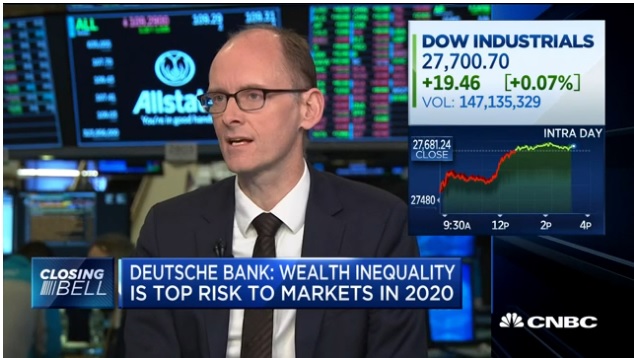Themen:
Research
November 13, 2019

Torsten Slok, Chief Economist, Deutsche Bank Securities, has issued his 20 Risks to Markets in 2020.
Topping the list is the continued increase in inequality. Slok appeared on CNBC’s Closing Bell to talk about this in more detail.
“The trend we have seen is wealth inequality, income inequality and healthcare inequality have been going in the same direction for 30 years and has been swiped aside by investors,” said Slok. “It’s an issue we think will become important in 2020 and ‘21 and investors need to have a view on if the current trend will continue or will something be done about it.”
 Slok added that depending on the outcome of the election, addressing inequality could mean more government spending, higher taxes and/or various ways of addressing spending on - for example - health, education and other things that can address inequality.
Slok added that depending on the outcome of the election, addressing inequality could mean more government spending, higher taxes and/or various ways of addressing spending on - for example - health, education and other things that can address inequality.
Trade war uncertainty is also high in the list. According to Slok the trade war would continue to weigh on capex and durable goods which are still trending lower with no “sign of a turnaround.” This is also the case for manufacturing and CEO confidence indicators are also pointing down. “The big issue (with the trade war) is not will there be a signed agreement, but how are CEOs going to respond?”
20 risks to markets in 2020
Further links on the topic
Global Economic Update with Torsten Slok
CNBC: Here are the biggest risks to the financial markets in 2020
Marketwatch: The biggest risk facing the stock market in the coming year isn’t trade jitters or the election, Deutsche Bank warns
How helpful was this article?
Click on the stars to send a rating